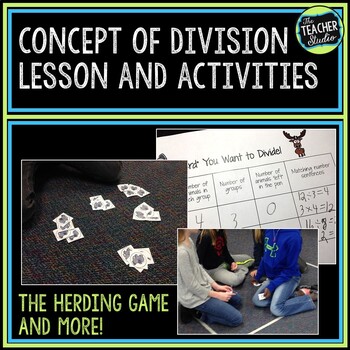Introduction to Division Concepts--A Division Lesson for Grades 3 and 4
- PDF
What educators are saying
Also included in
- Congratulations! You are well on your way to working more explicit and meaningful division lessons in your yearly plan!This bundle of division activities includes resources that can be used successfully with grades 2-5. This is a huge range, but—as you know—each grade comes with students who need woPrice $18.00Original Price $27.75Save $9.75
Description
The concept of division is a tricky one for students, and it's important to build that foundation with hands on, real world experiences. This resource has everything you need to build division concepts with your students--a game with follow up activities! Engaging, meaningful, and effective!
This resource has what you need for a two day lesson to help you introduce the concept of division concepts through an active game where students are "animals" in a herd and need to rearrange themselves into groups--including remainders! I have included full directions with photos to show you the lessons in action, suggestions for anchor charts or classroom displays, and any forms or sheets you would need to do it yourself!
Students work to write multiplication and division number sentences to represent how their herd divides! There is a follow up activity to do similar division with provided animal "counters" and then a number of pages of practice with basic division--3 pages of word problems as well as several other pages of division computation (2 and 3 digit). This resource is geared toward helping students build understanding of the relationship between multiplication and division and is appropriate for grades 3 and 4.
------------------------------------------------------------------------------------------------------
Looking for more multiplication and division resources?
1 2 3 Math: A Basic Division Skills Game and Activities
Select-a-Size Multiplication and Division Word Problems
Multiplication and Division Formative Assessments
Larger Number Division Word Problems
Division Task Cards with Interpreting Remainders
------------------------------------------------------------------------------------------------------
All rights reserved by ©The Teacher Studio. Purchase of this resource entitles the purchaser the right to reproduce the pages in limited quantities for single classroom use only. Duplication for an entire school, an entire school system, or commercial purposes is strictly forbidden without written permission from the author at fourthgradestudio@gmail.com. Additional licenses are available at a reduced price.






